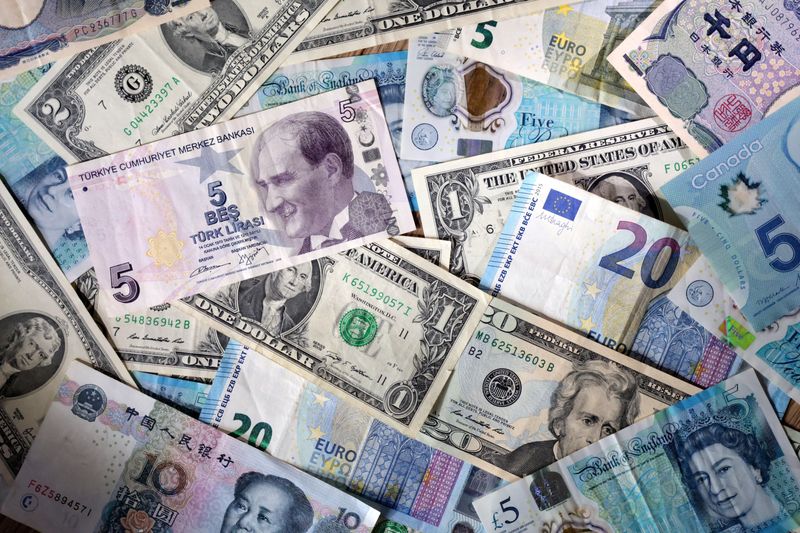US Dollar Pakistani Rupee
US Dollar Pakistani Rupee News
VIEW MOREPakistani Rupee: Currency Overview
The Pakistani rupee is the national currency of Pakistan and plays an important role in the global economy. Understanding the dynamics and prospects of this currency is important for traders and investors who want to participate effectively in the market and profit from trading and investment.
Key Characteristics and Parameters of the Pakistani Rupee
The Pakistani rupee was put into circulation in 1947 after the division of British India into India and Pakistan. At the beginning of its existence, it had a pegged exchange rate to the British pound sterling, which provided stability and predictability for the currency.
In subsequent years, however, the currency faced various challenges and changes in the USD to PKR exchange rate. These were due to domestic economic factors, political instability, and external influences. A number of devaluations and reforms were undertaken to maintain export competitiveness and stimulate economic growth.
The Pakistani rupee has the designation “PKR” and is divided into 100 paise. It is issued by the Central Bank of Pakistan, called the State Bank of Pakistan. The dollar to Pakistani Rupee exchange rate reflects its value against other currencies, especially the U.S. dollar. The dollar to PKR exchange rate is determined by supply and demand for the currency, macroeconomic indicators, political stability, and other factors.
An Overview of Pakistan’s Macroeconomic Situation
Pakistan’s macroeconomic situation plays an important role in shaping the dollar vs Pakistani Rupee exchange rate. Some of the major factors affecting the rupee include:
- High levels of economic growth contribute to the strength of the Pakistani Rupee, while low growth can put pressure on its exchange rate against the U.S. dollar.
- High levels of inflation can negatively affect the rupee’s purchasing power and cause it to decline.
- High unemployment can put pressure on the economy and currency.
- Foreign trade deficits can put pressure on the rupee as more foreign exchange is needed to cover imports.
- Political instability can cause uncertainty in the economy and cause the USD to PKR exchange rate to fall.
Factors Affecting the Pakistani Rupee
The exchange rate is determined by a complex combination of different factors. It is important to understand the following key factors:
- High inflation or high unemployment can negatively affect the rupee, while positive macroeconomic indicators can strengthen the exchange rate of USD to PKR.
- Uncertainty and risks associated with the political situation can cause uncertainty for investors and lead to declines.
- Foreign trade deficits may create pressure as more foreign exchange is needed to cover imports.
- International factors: U.S. Federal Reserve (Fed) policy and changes in U.S. interest rates can affect the inflow or outflow of investment in Pakistan. Also, world oil prices, since Pakistan is an oil importer.
It is important to note that all these factors are interrelated and can affect the rupee either individually or in combination.
Dollar vs Pakistani Rupee: Trading and Investing
There are various financial tools and platforms that allow traders and investors to engage in trading and investing in the Pakistani Rupee. Some of them include:
- Forex Market: Numerous forex brokers offer the ability to trade currency pairs involving the Pakistani rupee. These platforms allow traders to execute buy and sell transactions.
- Exchanges: At the Pakistan Stock Exchange (PSX), one can trade shares of Pakistani companies that may be linked to the Pakistani rupee.
Contracts for Difference (CFDs): Some financial brokers offer CFDs on the Pakistani Rupee, allowing speculation on changes in the US dollar to Pakistani Rupee exchange rate without actually buying or selling the currency.
USD to PKR Live: Forecasts and Recommendations
To analyze the current market situation and trends, it is important to consider macroeconomic data, political stability, foreign trade balance, and other factors mentioned earlier. Factors that can influence the market include economic growth, inflation, foreign exchange reserves, and external factors such as U.S. Federal Reserve policy and global oil prices.
It is advisable to consult opinions of financial and currency market experts and analysts to obtain USD to PKR rate predictions and assess the associated risks. These experts analyze macroeconomic factors, the political environment, and global trends to provide forecasts and evaluate possible risks. However, it is important to remember that forecasts are subject to change due to market volatility and other factors.
Based on the analysis and forecasts made by experts, the following recommendations can be offered:
- Carefully study and analyze macroeconomic data and the political environment in Pakistan, as they can have a significant impact on the rupee.
- Stay informed about geopolitical events and international factors such as U.S. Federal Reserve policy and global oil prices.
- Diversify your investments, including a portfolio of different financial instruments and assets, to reduce risk and spread potential returns.
- Be prepared for volatility and use appropriate risk management strategies, such as stop-loss and limit orders.
- Consult a financial advisor or broker experienced in the Pakistani Rupee for customized advice tailored to your risk profile and investment objectives.
USD to PKR: A Recap
The Pakistani Rupee is influenced by a variety of factors, including macroeconomic performance, political and geopolitical instability, and international factors such as U.S. Federal Reserve policy and global oil prices.Understanding and analyzing these factors are important tools for successful trading and investing. Following guidelines and adhering to risk management strategies can help reduce potential losses and increase the chances of success. Additionally, you can find information about the current USD to THB exchange rate and other currency pairs on our website.







